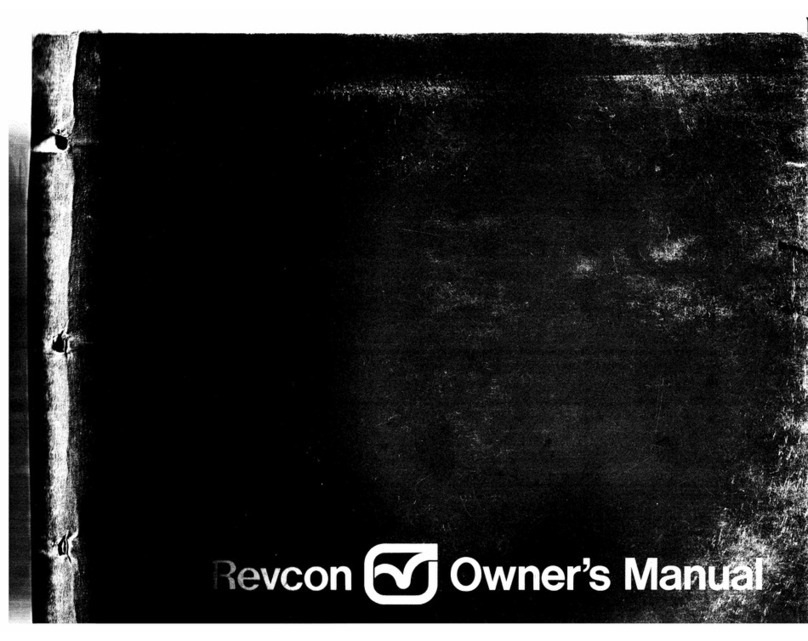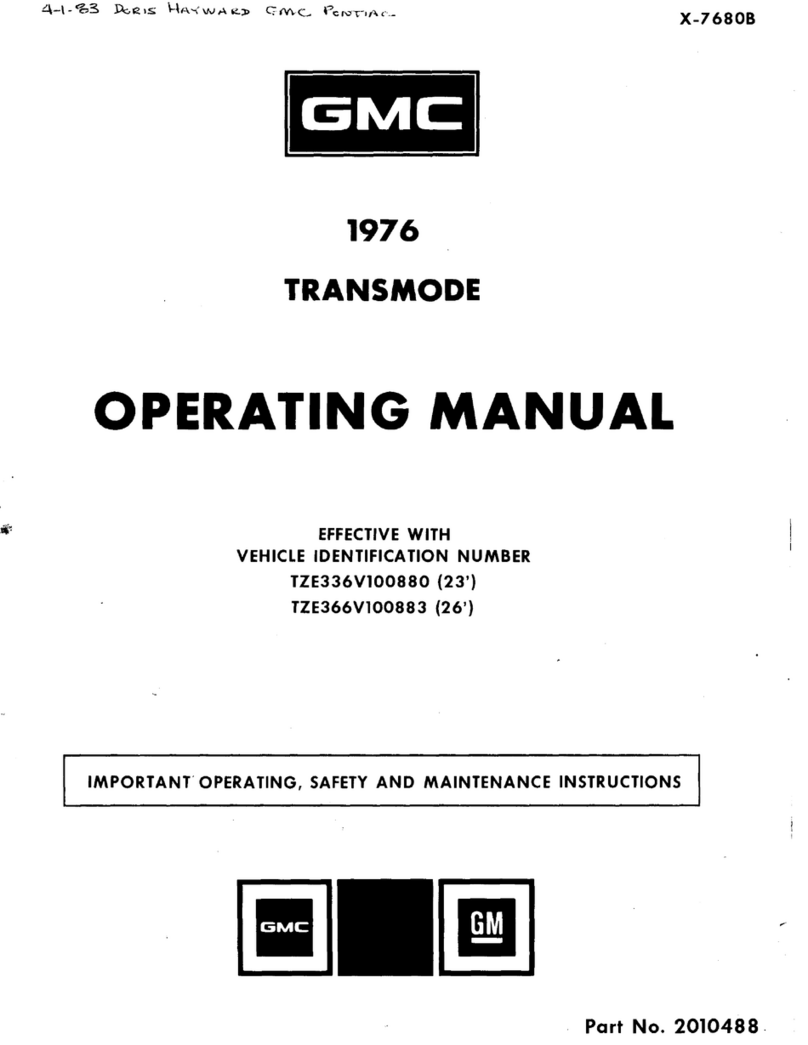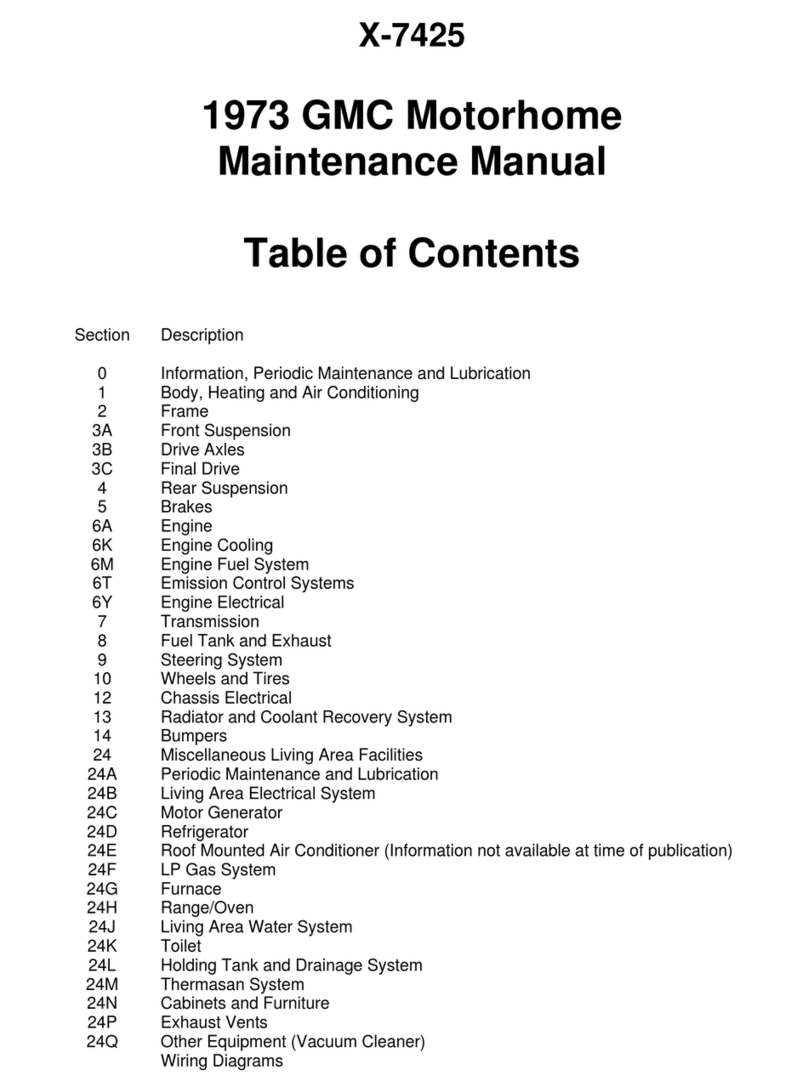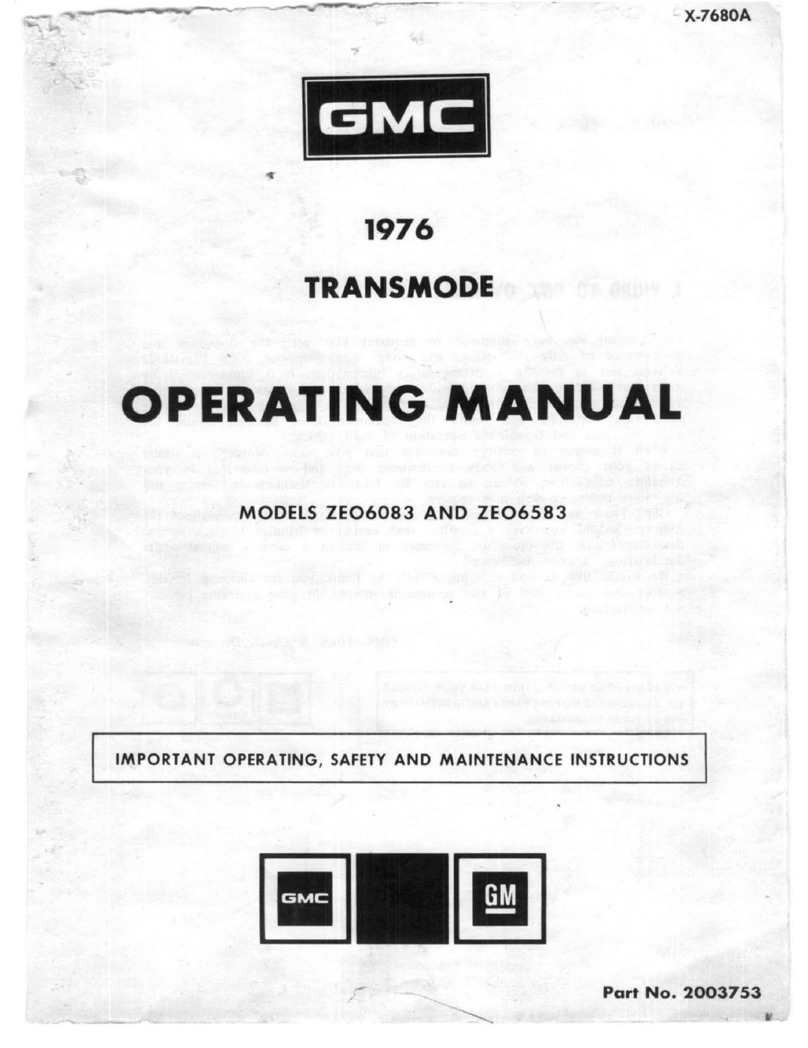GMC 1977 motorhome User manual
Other GMC Motorhome manuals

GMC
GMC 1973 Revcon User manual

GMC
GMC 1975 Motorhome User manual

GMC
GMC 1976 ZEO 6083 User manual

GMC
GMC X-7425 1973 User manual

GMC
GMC Motor Home User manual

GMC
GMC 1976 TRANSMODE User manual

GMC
GMC Motorhome 1976 User manual

GMC
GMC ZE06581 1976 Configuration guide

GMC
GMC X-7425 1973 User manual

GMC
GMC Royale User manual
Popular Motorhome manuals by other brands

Winnebago
Winnebago Journey Service manual

Tiffin Motorhomes
Tiffin Motorhomes 2017 Allegro Breeze owner's manual

Triple E
Triple E Free Spirit 2012 owner's manual

Winnebago
Winnebago 2014 Adventurer Operator's manual

NewMar
NewMar Dutch Star 1999 owner's manual

Winnebago
Winnebago 1996 Brave Operator's manual

























